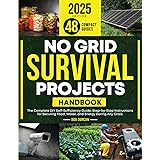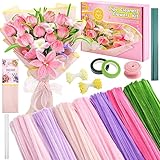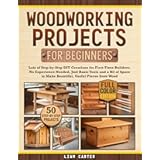The allure of handmade items is undeniable, especially when they combine functionality with unique aesthetics. Did you know that the global arts and crafts market size was valued at over $40 billion in 2022 and is projected to grow significantly? This surge in interest highlights a collective desire for personalization, sustainability, and the sheer joy of creation. The DIY projects showcased in the video above tap directly into this sentiment, offering a plethora of creative avenues from robust furniture to delicate jewelry. Let’s delve deeper into these fantastic DIY arts and crafts ideas, exploring the techniques, materials, and possibilities that await your creative touch.
Harnessing your inner artisan not only enriches your home with distinctive pieces but also provides a rewarding sense of accomplishment. While the video offers quick, visual instructions, understanding the nuances of each step and material can elevate your DIY journey. Here, we’ll expand on the essential techniques for crafting durable and beautiful items, ensuring your projects are not only functional but truly “chair-rishable.”
Crafting Comfort and Style: The DIY Bucket Chair
Imagine transforming a simple bucket into a stylish, durable chair. This innovative project is a testament to the power of upcycling and creative engineering. The video highlights key materials, but let’s break down the process for creating your own custom seating.
Materials You’ll Need:
- A sturdy bucket (5-gallon size is common)
- Cement Mix (approximately 4.5 quarts)
- Water (around 2 liters, adjust for consistency)
- Wooden dowel (for stability)
- Sandpaper
- Foam (for seating comfort)
- Bucket Lid (as a base for the seat)
- Hot Glue
- Staple Gun
- Rope (for decorative and functional accents)
Step-by-Step Construction:
- Cement Base Preparation: Begin by mixing approximately 4.5 quarts of cement mix with about 2 liters of water. The consistency should be thick but pourable. Pour this mixture into the bucket. It’s crucial to tap the bucket gently to release air bubbles, ensuring a solid, uniform base.
- Dowel Integration: Insert a wooden dowel into the wet cement. This dowel will act as a central support column for your chair, providing crucial stability. Allow the cement to set and dry completely. This process can take significantly longer than just a few hours; leaving it to dry overnight, or even for 24-48 hours, is recommended, depending on humidity and cement type. Proper curing ensures maximum strength.
- Refining the Base: Once dry, remove the cement form from the bucket. Use sandpaper to smooth any rough edges or imperfections. This step ensures safety and a polished finish.
- Crafting the Seat: Take the bucket lid. Cut a piece of foam to fit snugly onto the lid. Use hot glue to secure the foam, then wrap the foam and lid with your chosen upholstery fabric. A staple gun is ideal for fastening the fabric securely to the underside of the lid, creating a durable and comfortable seat cushion.
- Assembly and Finishing: Attach the newly upholstered seat to the cement base. The rope can be incorporated around the base or sides for aesthetic appeal or even used to create handles for easier portability, adding both flair and function to your custom chair.
The Versatility of Epoxy Resin: Encapsulating Art and Memories
Clear epoxy encapsulant is a remarkable material, allowing you to preserve items and create a durable, glossy finish. The video demonstrates several fascinating uses, from unique coasters to personalized jewelry.
Understanding Clear Epoxy Encapsulant:
Epoxy resin typically comes in two parts: Part A (resin) and Part B (hardener). When mixed in precise ratios, they undergo a chemical reaction that cures into a clear, hard, and durable plastic. This makes it perfect for embedding items, creating protective coatings, and adding a professional sheen to your DIY projects.
Crafting with Epoxy:
- Unique Beer Cap Art: Collect interesting beer caps, then superglue them onto a surface or use them individually. Mix equal parts of Clear Epoxy Encapsulant (Part A) and (Part B). Pour a thin layer over the caps. A heat gun can be gently applied to the surface to eliminate any pesky air bubbles, ensuring a crystal-clear finish. Allow to cure overnight, typically 12-24 hours depending on the resin type and environmental conditions.
- DIY Epoxy Resin Trays: Start with a basic tray. Measure its width and height, then cut a custom insert from paper or fabric to fit the base. Spray paint the tray frame if desired and let it dry completely. Once the tray is prepared, mix and pour the epoxy over your chosen design, following the same heat gun and overnight curing steps for a stunning, glossy finish.
- Personalized Necklace Pendants: For miniature wearable art, place small items like dried flowers, glitter, or tiny photographs into a necklace pendant blank. Use a clear glue to hold items in place if needed. Then, carefully pour mixed epoxy encapsulant over your design. Allow it to cure overnight, creating a unique and personal accessory. Some smaller, quick-cure epoxy resins can set in 10 minutes, but for optimal strength, longer cures are often preferred.
When working with epoxy, safety is paramount. Always use gloves, work in a well-ventilated area, and follow the manufacturer’s instructions for mixing ratios and curing times.
Unleashing Color: Melted Crayon Art and Beyond
The vibrancy of crayons isn’t just for paper. Melted crayon art offers a dynamic way to create abstract and colorful pieces. Moreover, other common household items can be transformed with simple techniques, as highlighted in the video.
Melted Crayon Canvas:
The video briefly shows the process: Wax Paper, Melt, Non-toxic Paint, a drop of dish soap, LET DRY. To create stunning melted crayon art, you’ll need crayons, a heat source (hair dryer, heat gun, or even baking), and a canvas. Arrange crayon pieces or whole crayons on a canvas, then gently apply heat to melt them, allowing the colors to blend and flow. For added texture and visual interest, you can mix a drop of dish soap into non-toxic paint, then apply this to the melted crayon surface. Let it dry thoroughly, which can take several hours depending on the thickness of the application. The “magic” happens as the colors dry and settle, revealing unique patterns.
Baking for Art:
Several projects in the video mention “Bake 10 minutes.” This technique is often used for polymer clay crafts, certain types of paint, or to set glues that require heat for activation. For example, some custom charms or small decorative items can be shaped from oven-bake clay, then baked at a specific temperature (usually around 275°F or 135°C for 10-15 minutes, depending on thickness) to harden them. Always check the product instructions for precise baking times and temperatures to avoid cracking or burning.
Creative Upcycling for Home Decor: Lamp Shades and More
Transforming everyday items into decorative pieces is a hallmark of intelligent DIY. The video shows a simple yet effective way to refresh a lampshade, among other techniques.
Lamp Shade Transformation:
A dingy lampshade can completely alter the ambiance of a room. The video suggests: Water, Dish soap, Let sit for 5 minutes, PAINT! LET DRY. To revive an old lampshade, carefully soak it in warm water with a few drops of dish soap for about 5 minutes. This helps loosen dirt and grime without damaging the fabric. Gently clean and rinse. Once completely dry, it’s ready for its new look. Consider spray painting it a bold new color, using fabric dyes, or even decoupaging it with patterned paper for a personalized touch. Allowing ample time to let paint or glue dry is critical for a smooth, lasting finish.
The Power of Mod Podge and Clear Glues:
Mod Podge is a versatile craft essential, functioning as an all-in-one glue, sealer, and finish. It’s excellent for decoupage projects, sealing painted surfaces, or creating a clear protective layer. Similarly, clear glue, frequently mentioned with “Let dry” in the video, is fundamental for many crafting tasks. Whether you’re attaching embellishments, sealing small items, or creating layered effects, the importance of letting glue dry completely cannot be overstated. Rushing this step often leads to smudged designs or weak bonds.
Embracing DIY arts and crafts is more than just making things; it’s about expressing creativity, practicing mindfulness, and contributing to a more sustainable lifestyle. The projects highlighted in the video offer a fantastic starting point for anyone looking to add personalized flair to their surroundings or simply enjoy the process of making. Whether you’re constructing a robust bucket chair or encapsulating tiny treasures in epoxy, these DIY projects offer both challenge and immense satisfaction. Don’t hesitate to experiment with different colors, textures, and designs to make each piece uniquely yours. Watch the video above for visual guidance and get inspired to start your next creative endeavor!







